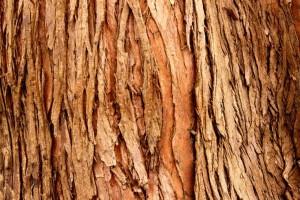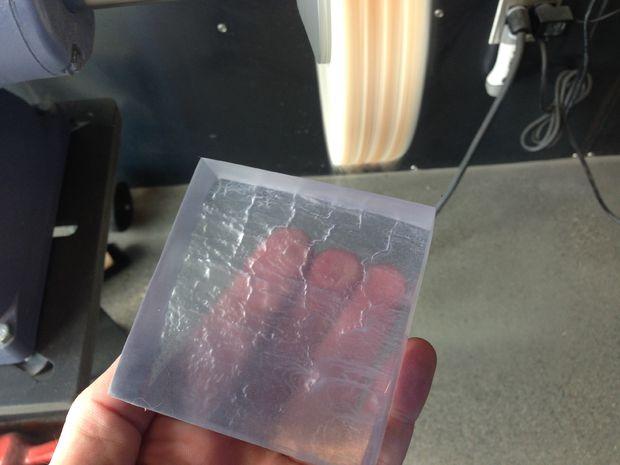 If you are going for a walk in the woods, you may be mesmerized by the variety of sensory experiences available to you. The natural diversity represented on that walk is what keeps our interest piqued; we are looking around everywhere, breathing in the smells, and waiting for what might just be around the corner. You might see a woodland creature or encounter a large fallen tree. As unpredictable as a walk in the woods can be, what’s predictable is many of the patterns that constitute the many different objects you see. These repeating patterns are called “fractals” and can be found in all kinds of places. In the natural world, fractals can be found in ocean waves, river systems, sea shells, pine cones, trees… We also find fractals in human built objects as well. Apparently, natural and human built objects can have quite similar fractal patterns.
If you are going for a walk in the woods, you may be mesmerized by the variety of sensory experiences available to you. The natural diversity represented on that walk is what keeps our interest piqued; we are looking around everywhere, breathing in the smells, and waiting for what might just be around the corner. You might see a woodland creature or encounter a large fallen tree. As unpredictable as a walk in the woods can be, what’s predictable is many of the patterns that constitute the many different objects you see. These repeating patterns are called “fractals” and can be found in all kinds of places. In the natural world, fractals can be found in ocean waves, river systems, sea shells, pine cones, trees… We also find fractals in human built objects as well. Apparently, natural and human built objects can have quite similar fractal patterns.
What’s fascinating about fractals is they are interpreted by many as Mother Nature’s blueprint; they are patterns that repeat at any scale, infinitely. And now you can 3D print a microscape constructed from machined, waterjet cut steel and plastic — combining steel and tree fractals to “blur the line between natural/unnatural forms and challenge the divide between digital and physical craft.”
Oakland, California-based Smith|Allen Studio provides the design of this microscape via Instructables, which prints a set of 2 pieces each 6 x 14 x 6 inches. If you want to create your own miscroscape, you’ll need the following items: a tree and a 123D Catch app to 3D scan it; a 3D printer (Smith|Allen has a few recommendations; Proto-pasta CFPLA; Omax Waterjet; 1/4″ Steel; Gunblue; Novus 123; Turtle Wax Canuba Wax; and Turtle Wax Rubbing Compound.
Once you get what you need, use the 123D Catch app to scan a tree — taking about 20 photos from all angles. Next, after you scan and clean up the data, send the solid mesh to your 3D printer. After you get your prints, you will need to polish them — which can be a time consuming process. Smith|Allen started at 120grit sand paper and went to 800. They use a polishing compound, red rouge, on the wheel, and a paste wax. The whole process takes about 6 hours to print and polish each piece. Loads of time, but worth seeing tree fractals, right?
Next, they made the the microscape bases using the 5th axis on the Omax — assembling the bases like a box using 45 degree bevels on all sides. Then, they used JB weld on the bevels and wrapped them up with blue tape to dry. This construction method meant the inside was free for the electronics and support components. For the patina, after much trial and error (which you can read about here), they ended up using a gunbluer to get the right patina. After you succeed with the same difficult process described in the instructions, let the blue dry a few hours and then apply three layers of linseed oil.
Finally, you want to assemble the electronics and lighting. Leave the 3D fractal print on top transparent. Use a 3D printed opaque enclosure for adafruit neopixel LEDs to light it from the bottom, with the LEDs connected to an arduino (with 6-24v) and powered by a 5V base power supply. Internals are mounted to a Carbon Fiber PLA structure and 3D printed with matte black CFPLA. In the CFPLA structure, you run your signal and power channels — attaching a matte black woven power cord.
Voila! You have now created your own microscape, so you can plug it in and enjoy!
The end result is a slickly designed microscape that appears to deliver the results the original creators intended. This project fuses physical and digital design together in one project, and it also proffers a fusion of natural and human-made objects in its design conception.
What do you think of this unique design? Is this the sort of project you like to see on Instructables? Let us know how you feel over at the 3D Printed Microscapes Instructable forum thread at 3DPB.com.
Subscribe to Our Email Newsletter
Stay up-to-date on all the latest news from the 3D printing industry and receive information and offers from third party vendors.
You May Also Like
3D Printing Unpeeled: Wind Turbines, Probiotics and Lenses
TPI Composites, ORNL and Ingersoll Rand are working to make wind turbine tooling segments that can be 18.3 meters long. These elements also include resistive wires that help keep the...
3D Printing Unpeeled: Digital FDM Filament for Functional Gradients
Just published in Nature, a paper by a Seoul National University team looks at “3D printing with a 3D printed digital material filament for programming functional gradients.” Sang-Joon Ahn, Howon...
3D Printing Unpeeled: $5000 Cold Spray 3D Printer, Roland DGA & Living Materials
The AeroForge is a $5000 cold spray metal printer for copper made by a student team at Rice University. In a paper for ACS Central Science a team from Nanjing...
3D Printing Webinar and Event Roundup: April 28, 2024
In this week’s 3D Printing Webinar and Event Roundup, the Ceramics Expo is taking place in Michigan, Stratasys continues its advanced training courses, and SPE is holding a Polymer Characterization...


































